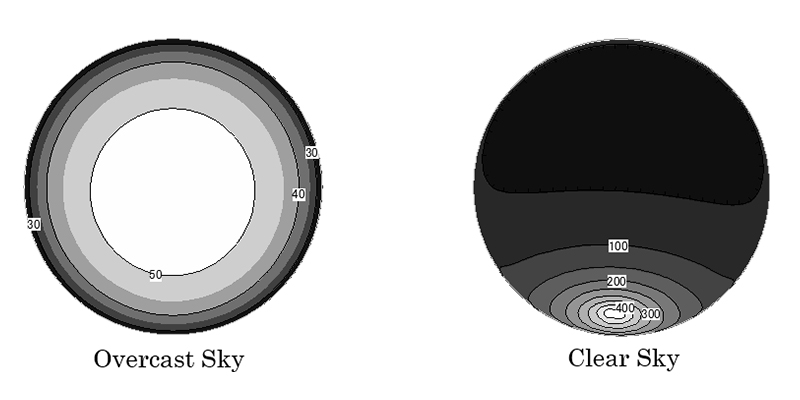Downloads
DOI:
https://doi.org/10.7480/jfde.2015.3-4.993Keywords:
Facade, External louver system, Sun shading, Office building, Annual air-conditioning load, Electrical energy consumptionAbstract
The authors previously proposed integrated-facade-systems comprising different types of external louvers integrated with buckling restraint braces. The systems can be applied to both new and existing buildings, paying attention to the building’s appearance, upgraded structural performance and indoor environment. The authors have studied indoor daylight conditions with louver facades and a research paper was published in this journal (Misawa et al., 2014). This research study reports on the energy conservation performance for louver facades and proposes an External Shading Coefficient (hereinafter referred to as the ESC) for external louver systems. Situations with five external louvers types and no louvers, facing three facade orientations (East, South and West) are examined. The annual ESC is simulated every hour using Radiance software for transient solar radiation calculations. Furthermore, by using the proposed ESC, case studies for typical Japanese offices are carried out to verify reduction effects on the annual air-conditioning load and electrical energy consumption of an air source heat pump for each louver set-up. Simulation results are calculated for every hour using TRNSYS software; the results show that both air-conditioning loads and electrical energy consumption are reduced regardless of louver types and facade orientations when integrated external louver facades are installed.
How to Cite
Published
Issue
Section
License
Copyright (c) 2016 Yutaka Misawa

This work is licensed under a Creative Commons Attribution 4.0 International License.
Authors or their institutions retain copyright to their publications without restrictions.
References
CIBSE. (1999). Lighting Guide LG10. Daylighting and window design.
Hikone, S., Misawa, Y., Nakamura, M., Iwamoto, S., Iwata, M. (2009). Lighting Environment of Diagonally Arranged Louver on Integrated Facade System, Journal of Environmental Engineering (Transactions of AIJ), 74(644), 1187-1193.
Igawa, N., Matsuzawa, T., Koga, Y. (2004). Comparison of All Sky Model-R and All Sky Model-L between previous models, Proceeding of Architectural Institute of Japan, D-2, 57-58.
Kanaki, Y., Hikone, S., Yamashita, T., Iwata, M. (2008). Seismic Strengthening by the buckling restrained braces arranged diagonally. Journal of structural and construction engineering, (634), 2215-2222.
Kubo, K., Hikone, S., Misawa, Y., Sato, T., Fukazawa, T., Iwamoto, S., Iwata, M. (2011). A Study on Indoor Thermal Environment in Integrated Facade System; Sun Shading Effect of Louver and Case Study of Annual Air-conditioning Load, Proceeding of The Society of Heating, Air-Conditioning Sanitary Engineers of Japan, 23(2), 927-930.
Kwok, A. G., Grondzik, W. T. (2007). The Greenstudio Handbook, environmental strategies for schematic design. Enquiry: A Journal for Architectural Research, 4(2).
Nakamura, M., Hikone, S., Misawa, Y., Iwamoto, S., Iwata, M. (2010). The integrated facade consists of louvers and buckling-restrained-braces as a building system, Journal of Environmental Engineering (Transactions of AIJ), 75(647), 121-129.
Sato, T., Kubo, K., Hikone, S., Misawa, Y., Cho, W., Iwamoto, S., Iwata, M. (2012). Study on Indoor Thermal Environment in Integrated Facade System, Journal of Environmental Engineering (Transaction of AIJ), 77(676), 467-474.
Takeuchi, T., Koyano, K., Iwata, M. (2005). Studies on integrated facade engineering. Analyses on existing facades, Journal of Environmental Engineering (Transaction of AIJ), (592), 97-104.
Takeuchi, T., Koyano, K., Yasuda, K., Yuasa, K., Iwata, M. (2006a). Studies on integrated facade engineering. Proposal for integrated facade and its evaluation, Journal of Environmental Engineering (Transaction of AIJ), (601), 81-88.
Takeuchi, T., Yasuda, K., Yuasa, K., Okayama, S., Miyazaki, K., Iwata, M. (2006b). Seismic retrofit of aged building with integrated facade, AIJ Journal of Technology and Design, (24), 161-166.
Takeda, H., Hikone, S., Misawa, Y., Iwata, M. (2010). A Study on Bound Louver of the Integrated Façade, Proceeding of Architectural Institute of Japan, D-2, 1239-1240.
Takizawa, H. (1985). Proposal of Standard issues for Office building, Proceeding of Architectural institute of Japan, 15th heating issue symposium, 35-42.
The Society of Heating, Air-Conditioning and Sanitary Engineers of Japan. (2010). SHASE Handbook 14th Vol.1 Fundamental. 414.
Ueno, T., Kitahara, H., Miyanaga, T. (2013). Development of Heat Source Characteristic Model of Home Use Air Conditioner : (Part 1) Characteristic Model during Cooling Period, The Society of Heating, Air-Conditioning Sanitary Engineers of Japan, (190), 41-49.
Ueno, T., Kitahara, H., Miyanaga, T. (2014). Development of Heat Source Characteristic Model of Home Use Air Conditioner (Part 2) Characteristic Model for Heating Period and Evaluation of Applicability of Model to Various Appliances, The Society of Heating, Air-Conditioning Sanitary Engineers of Japan, (204), 85-92.
Yoshizawa, N., Kobayashi, K., Inanuma, M., Takeda, H. (2005). Typical Annual Weather Data (TWD9302/L) in Tokyo Area and its Application to the Daylighting Simulation, Journal of environmental engineering (Transaction of AIJ), (598), 23-29
